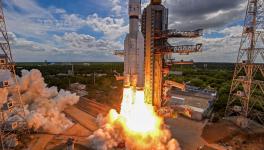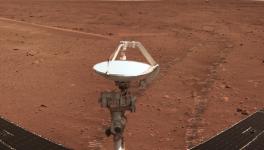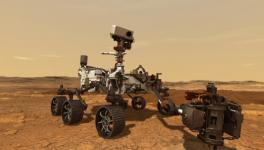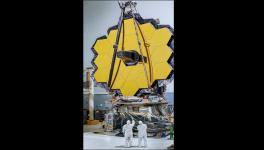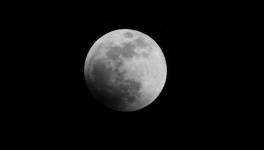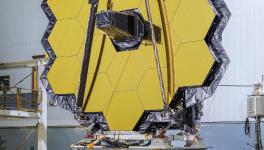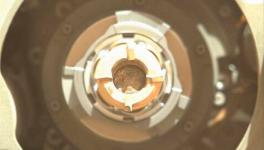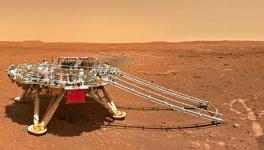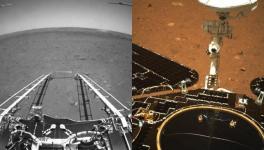China’s Mars Mission: Novel Data Pouring In, Scientists Begin Analysing Obtained Information
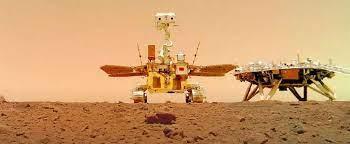
Zhurong Rover. Image Courtesy: Wikimedia Commons.
China's Mars Mission with the Tianwen-1 spacecraft and the Zhurong rover has been pouring novel data. Scientists across China, Hong Kong, and Macau are busy analysing and processing the flurry of information hidden in the data. Few studies have already been out, and researchers expect to get more novel details on the surface of the red planet, carrying information on its climate, geology and history in coming weeks or months.
Reportedly, the NAOC (National Astronomical Observatories of the Chinese Academy of Sciences) has released about 200 gigabytes of data received from the Zhurong rover and the Tianwen-1 orbiter. The data has been obtained from eight instruments, including a camera, radar system, climate sensors, and laser spectrometer between February and June this year. Some of the features of the surface of Mars, for example, possible sedimentary material and mud volcanoes, may hint towards a historic flow of water, which excited the scientists.
Tianwen-1 reached Mars in February this year, and it dropped Zhurong accompanied by a lander onto Utopia Planitia, a vast basin on the planet. Initially, it was planned that the rover would mission around three months, which has been exceeded to a great extent. In about four months, Zhurong travelled more than 1000 meters. However, in September, the rover had to undergo a hibernation phase as Mars went behind the Sun relative to Earth. This meant a loss of communication, which could be regained in October, and since then, the rover has travelled another 200 meters in a direction that may have been the coastline of an ancient ocean.
Back in March, some images of the planet were obtained from the cameras installed in the orbiter. Some images and videos were even made public by CNSA (China National Space Administration), captured by the rover during its descent and also from the surface. Apart from the initial information, now scientists are studying the larger volume of data released only in September, including images from navigation camera in the rover, climatic information on temperature, pressure and wind speed, on the chemical composition of the rocks, soil and sand obtained from the laser spectrometer. It also includes some preliminary clues from beneath the surface with the help of the ground-penetrating radar.
Till now, two studies have already been published revealing the analysis of the data received. The first one, published in a pre-print server in September, analysed the images and information on friction obtained from the rover's wheels. These showed that the regions of the planet over which Zhurong rolled over have similar properties with compact and sandy soil on Earth. Xiao Long, a planetary geologist of the China University of Geosciences, Wuhan, commented on it as, "The study provides useful data about surface soil properties. This might be helpful for understanding how soil and dust on the surface formed."
Long is among the scientists who are conducting analyses on the vast array of data received from Mars. He was not involved in the study but is conducting his own analysis.
The second study published in August used images of high resolution received from the orbiter. It was mainly focused on pinpointing the precise coordinates of the rover.
However, researchers say that more and more studies are in the pipeline and are expected to be out shortly, including some of them on the region's topography. So far, the data are being shared with only those who are associated with the mission. However, the NAOC is expected to release them to the public and international community as well.
Zhurong will continue to explore for more years now, as some of NASA's Mars rovers did. Tianwen-1 has also tuned itself from mainly acting as the communication relay between Zhurong and Earth to conducting its own observation about Mars.
Earlier this month, CNSA and the ESA (European Space Agency) conducted a trial to see whether ESA's Mars Express orbiter could be used to relay Zhurong's data to Earth. This exercise is considered an important step in increasing international collaboration with China.
Get the latest reports & analysis with people's perspective on Protests, movements & deep analytical videos, discussions of the current affairs in your Telegram app. Subscribe to NewsClick's Telegram channel & get Real-Time updates on stories, as they get published on our website.









